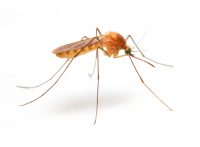Category: Injuries and Illness
Modern safety management goes beyond covering traditional workplace accidents to now being equally concerned with illnesses caused on and even off the job. This section will explain what you need to know to avoid both injuries and illnesses, and to track your progress in reaching this goal.
Free Special REport: Does Your PPE Program Meet OSHA’s Requirements?
According to the Occupational Safety and Health Administration (OSHA), fatigued or drowsy driving may be a factor in more than 100,000 crashes each year with 40,000 injuries and 1,550 deaths annually. A National Sleep Foundation study revealed that 51 percent of adults have driven while drowsy, and 17 percent report having fallen asleep while driving […]
In 2013, over 3,000 people were killed in motor vehicle crashes involving distracted drivers, and 424,000 were injured. According to the annual survey conducted by the National Highway and Traffic Safety Administration (NHTSA), at any given moment across America, approximately 660,000 drivers are using cell phones or manipulating electronic devices while driving; a number that […]
According to the National Safety Council, more than 35,000 Americans die each year in traffic crashes. The AAA Foundation for Traffic Safety estimates that aggressive driving is a factor in more than half of all fatal crashes—and one type of aggressive driving, speeding, is involved in more than 30 percent of fatal crashes, according to […]
It’s National Safety Month, and the National Safety Council is encouraging drivers to make transportation safety a priority. Every day, 100 people die on America’s roads. This week, we’ll look at how you can make sure your workers get there safely by taking precautions before they hit the road. Today, we’ll look at how to […]
According to the Centers for Disease Control and Prevention (CDC), more than 22,000 people die annually from overdoses of prescription painkillers, which now contribute to more deaths than all illegal drugs such as heroin and cocaine. Workers who use prescription painkillers—particularly those in safety-sensitive positions such as operating machinery—may be at increased risk for incidents, […]
For much of the 20th century, opioid painkillers were primarily used to ease chronic cancer pain and relieve acute pain. In the 1990s, new formulations of opioid medications became available, leading to the steeply increased use of opioid painkillers (for example, OxyContin) for chronic pain—and to a steep increase in accidental poisoning deaths. According to […]
OSHA first proposed a confined spaces rule for the construction industry in 1980—but only finalized its confined spaces in construction rule on May 1, 2015. In the interim, OSHA issued a rule covering confined space entry in general industry (1993) and the shipyard industry (1994). But the new confined space in construction rule does not […]
Some spaces are not designed for continuous human occupancy. Manholes, crawl spaces, tanks, and other confined spaces can be difficult to get into and even more difficult to get out of. Once inside these spaces, workers may face life-threatening hazards that include toxic substances, electrocutions, explosions, and asphyxiation. For more than twenty years, employers have […]
According to the CDC, there were 2,122 reported cases of West Nile virus disease in U.S. residents in 2014. The disease is carried by birds and mosquitoes and transmitted to people by mosquitoes. A total of 47 states and the District of Columbia reported West Nile virus infections in people, birds, or mosquitoes in 2014. […]
Healthcare workers aren’t the only workers at risk from infectious diseases on the job. Outdoor workers must also be aware of potentially infectious pathogens—as one Kansas farmer discovered too late, in spring 2014, after he picked up a deadly tickborne disease that was later found to be a previously unknown virus. Here are some infectious […]










